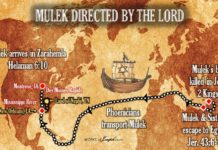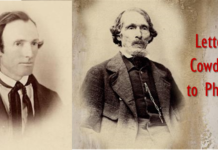“Great Principle of Happiness Consists in Having a Body”
“We came to this earth that we might have a body and present it pure before God in the celestial kingdom. The great principle of happiness consists in having a body. The devil has no body, and herein is his punishment. . . .
All beings who have bodies have power over those who have not. The devil has no power over us only as we permit him. The moment we revolt at anything which comes from God, the devil takes power. [Joseph Smith, Teachings of the Prophet Joseph Smith, sel. Joseph Fielding Smith (1976), 181]
Now, let me restate that: The punishment of the adversary was that he did not receive a body. All beings who have bodies, as the Prophet said it, will have power over those who do not. The devil has no power over us, only as we permit him…
Editor’s note: This simply means we should have no fear of Satan. He can hurt us but we can crush him. Don’t give into his influence. That also means using our “eyes” as the Sprit to our Soul and not confusing the symbols of the world that depict the eye as evil. All things are created by God, and Satan just uses or steals God’s ideas to deceive us. Satan cannot Create anything!
Biggest Challenge and Best Time
We live in very troubled times—the beginning of even more troubled times. I want to speak to you very openly. What we faced in World War II, the jeopardy and challenge, was nothing compared to what you young people face now. It is a terrible and challenging time and, at once, perhaps the best time ever in the history of mankind to be alive.
I want to make this point: In the premortal existence, we were given spirit bodies, and we were given agency. So we are free.” The Instrument of Your Mind and the Foundation of Your Character BOYD K. PACKER of the Quorum of the Twelve Apostles February 2, 2003
 Only Two Days Left to Purchase Early-Bird Conference Tickets Here
Only Two Days Left to Purchase Early-Bird Conference Tickets Here
All-Searching Eye
Mosiah 27:31 Yea, every knee shall bow, and every tongue confess before him. Yea, even at the last day, when all men shall stand to be judged of him, then shall they confess that he is God; then shall they confess, who live without God in the world, that the judgment of an everlasting punishment is just upon them; and they shall quake, and tremble, and shrink beneath the glance of his all-searching eye. (See page 193 Annotated Book of Mormon
The Jewish people use the Hebrew word “Hamesh” as an equivalent for “Hamsa.” Hamesh means “five” in Hebrew. Jewish people refer to the five-fingered hand symbol as the “Hamesh” hand. It has been present in Judaism dating all the way back to Biblical times, where it is referenced in Deuteronomy 5:15, stated in the Ten Commandments as the “strong hand” of God who led the Jews out of Egypt.* The eye within the hand represents the all-searching Eye of God. Shown below are artifacts dated to Hopewell time-frames on display at the Cahokia Mounds State Historic Site near East St. Louis, Illinois. https://en.wikipedia.org/wiki/Hamsa)
 (Left) Replica shell of an all-searching eye in a five-fingered hand Hamsa amulet (note the hole at the bottom). Both the item on the left and below are displayed in the Cahokia Museum, on loan from Southern Illinois University, Edwardsville, IL.
(Left) Replica shell of an all-searching eye in a five-fingered hand Hamsa amulet (note the hole at the bottom). Both the item on the left and below are displayed in the Cahokia Museum, on loan from Southern Illinois University, Edwardsville, IL.
(Left) Hopewell era etched stone of an all-searching eye symbol in a Hamsa five fingered hand pattern.
 Salt Lake Temple
Salt Lake Temple
(Picture Right) “The all seeing eye above the second window in the east and west central towers [of the Salt Lake Temple], is an eye looking out at us from below a veil of pleated fabric. Surrounding the eye is another aureole of light depicted by a raised oval with outward shooting rays. The keystone in the arch above is blank. This is the all seeing eye a symbol frequently used in pioneer Utah. This symbol reminded the Saints that the eye of the Lord was upon them and that all that they did should be in accordance with the will of the Lord. John Taylor noted, “it penetrates and is enabled to weigh the actions and motives of the children of men.” In proverbs we are told, “the eyes of the Lord are in every place beholding the evil and the good.” (Prov. 15:3) The all seeing eye of the Lord was often used on Church cooperative buildings with the phrase “Holiness to the Lord” arched over it. Sometimes the all seeing eye was used in pioneer tabernacles. One is located over the choir seats in the St. George Tabernacle.
However the all seeing eyes on the temple differ from all the rest. Most all seeing eyes have eyebrows above them, but those on the Salt Lake Temple are depicted looking out from beneath a pleated veil. Veils are used to separate the sacred from the profane, the spiritual from the carnal, truth from confusion, the Lord from mankind. The veil separating man and the Lord is removed only on rare occasions of great faith and obedience and because of the knowledge of this man, [the Brother of Jared] he could not be kept from beholding within the veil; and he saw the finger of Jesus which when he saw he fell with fear for he knew that it was the finger of the Lord and he had faith no longer for he knew, nothing doubting. Wherefore, having this perfect knowledge of God he could not be kept from within the veil therefore he saw Jesus and He did minister unto him. (Ether 3:19-20). “And prepare for the revelation which is to come when the veil of the covering of my temple in my tabernacle which hideth the earth shall be taken off and all flesh shall see me together.” D&C 101:23.” Exterior Symbolism of the Salt Lake Temple Reflecting the Faith that Called the Place Into Being by Richard G Oman
All Seeing Eye Examples
“While it doesn’t look like an “eye” in the traditional sense, the common pine cone is also associated with eye symbolism. The human pineal gland is shaped like and named after a pine cone, and it is an essential component in how we perceive light. This gland is said to lie at the geometric center of the brain, and considered by some as the biological Third Eye; the French philosopher Descartes famously referred to the pineal gland as the Seat of the Soul. Many believe this gland is the body’s Third Eye, responsible for spiritual enlightenment and sometimes referred to as the “seat of the soul.” Many religious and cultural artifacts depict heroes holding staves topped by pine cones or wearing crowns made to resemble pine cones.” The Symbolism of Eyes The esoteric significance of the pinecone dates as far back as the ancient Babylonian mystery religions as a symbolic representation of the Pineal Gland.
 “Egyptian hieroglyphs offer a parallel to King Mosiah’s monetary system. The grain measure in ancient Egypt was represented by the eye of Horus.” Egyptian Hieroglyphs for Grain Measurement by Book of Mormon Central- Charting the Book of Mormon,© 1999 Welch, Welch, FARMS
“Egyptian hieroglyphs offer a parallel to King Mosiah’s monetary system. The grain measure in ancient Egypt was represented by the eye of Horus.” Egyptian Hieroglyphs for Grain Measurement by Book of Mormon Central- Charting the Book of Mormon,© 1999 Welch, Welch, FARMS



Annuit Cœptis

“Annuit cœptis (/ˈænuɪt ˈsɛptɪs/; in Classical Latin: [ˈannuɪt ˈkoe̯ptiːs]) is one of two mottos on the reverse side of the Great Seal of the United States. (The second motto is Novus ordo seclorum; another motto appears on the obverse (front) side of the Great Seal: E pluribus unum.) Taken from the Latin words annuo (third-person singular present or perfect annuit), “to nod” or “to approve”, and coeptum (plural coepta), “commencement, undertaking”, it is literally translated, “[providence] favors our undertakings” or “[providence] has favored our undertakings” (annuit could be in either the present or perfect tense). Wikepedia/Annuitcœptis

Great Seal of the United States
The Great Seal of the United States is filled with symbolic design. It contains the all seeing eye surrounded by the words “Annuit Coeptis”. This motto was chosen by Charles Thomson, the seal’s final designer. Charles Thomson himself stated, “The Eye over it [the pyramid] and the motto Annuit Cœptis allude to the many signal interpositions of providence in favor of the American cause.” This reminder of God’s providence was also included on the first currency of our new nation.
Nephite Interpreters
The “All-Seeing-Eye” Symbol and the Urim and Thummim Connection
In an article called “The All-Seeing-Eye” Symbol and the Urim and Thummim Connection by Steve Reed said, “We then have an account of Joseph Smith’s first interaction with the Nephite ‘urim and thummim’ via Joseph Knight who said:
“…he (Joseph Smith) seamed to think more of the glasses or the urim and thummim than he did of the plates for says he, I can see anything. They are Marvelous.”
So it appears that the seer stone and the urim and thummim both allowed the user to possess the attribute of an ‘all-seeing-eye’. We know of ‘seers’ in the scriptures, men who had the ability to perceive things that other men could not through divine power.
In the Book of Mormon, the missionary Ammon explains what a seer is to the king of Zarahemla:
“Now Ammon said unto him: I can assuredly tell thee, O king, of a man that can translate the records; for he has wherewith that he can look, and translate all records that are of ancient date; and it is a gift from God. And the things are called interpreters, and no man can look in them except he be commanded, lest he should look for that he ought not and he should perish. And whosoever is commanded to look in them, the same is called seer.” (Mosiah 8:13)
Where it gets interesting to me, however, is Lucy Mack Smith’s physical description of the interpreters/urim and thummim that Joseph Smith had in his possession.
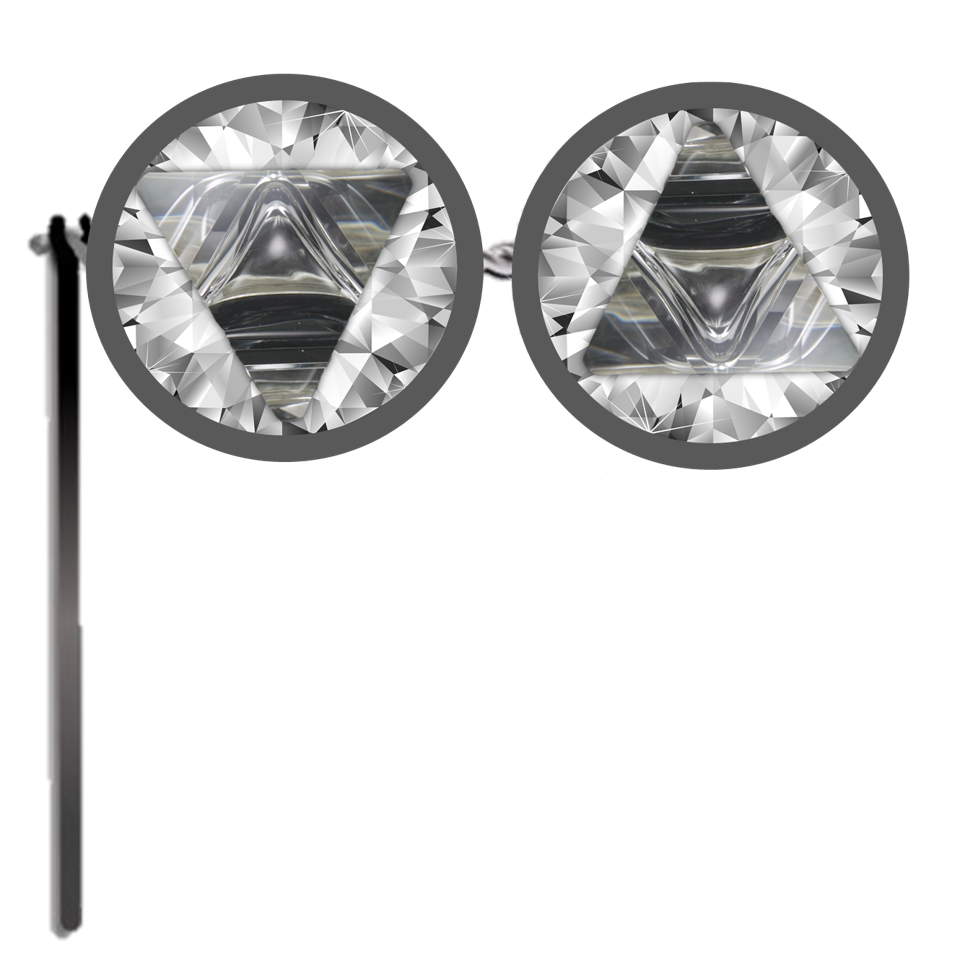 “On the morning of September 22, after Joseph had returned from the hill, he placed the article [the Nephite interpreters] of which he spoke into my hands, and, upon examination, I found that it consisted of two smooth three cornered diamonds set in glass, and the glasses were set in silver bows, which were connected with each other in much the same way as old fashioned spectacles. . . .[picture left]. He [Joseph Smith] handed me the breastplate spoken
“On the morning of September 22, after Joseph had returned from the hill, he placed the article [the Nephite interpreters] of which he spoke into my hands, and, upon examination, I found that it consisted of two smooth three cornered diamonds set in glass, and the glasses were set in silver bows, which were connected with each other in much the same way as old fashioned spectacles. . . .[picture left]. He [Joseph Smith] handed me the breastplate spoken  of in his history. It was wrapped in a thin muslin handkerchief, so thin that I could feel its proportions without any difficulty. It was concave on one side and convex on the other, and extended from the neck downwards, as far as the center of the stomach of a man of extraordinary size. It had four straps of the same material, for the purpose of fastening it to the breast.” (History of Joseph Smith by His Mother Lucy Mack Smith)
of in his history. It was wrapped in a thin muslin handkerchief, so thin that I could feel its proportions without any difficulty. It was concave on one side and convex on the other, and extended from the neck downwards, as far as the center of the stomach of a man of extraordinary size. It had four straps of the same material, for the purpose of fastening it to the breast.” (History of Joseph Smith by His Mother Lucy Mack Smith)
The actual shape of the urim and thummim that Joseph possessed were triangular! Lucy also described them as ‘spectacles’ and in other accounts we read that Joseph probably held them up to his face to use them as one would use a pair of glasses.
In 1891 William Smith, the Prophet’s brother, was interviewed and he said:
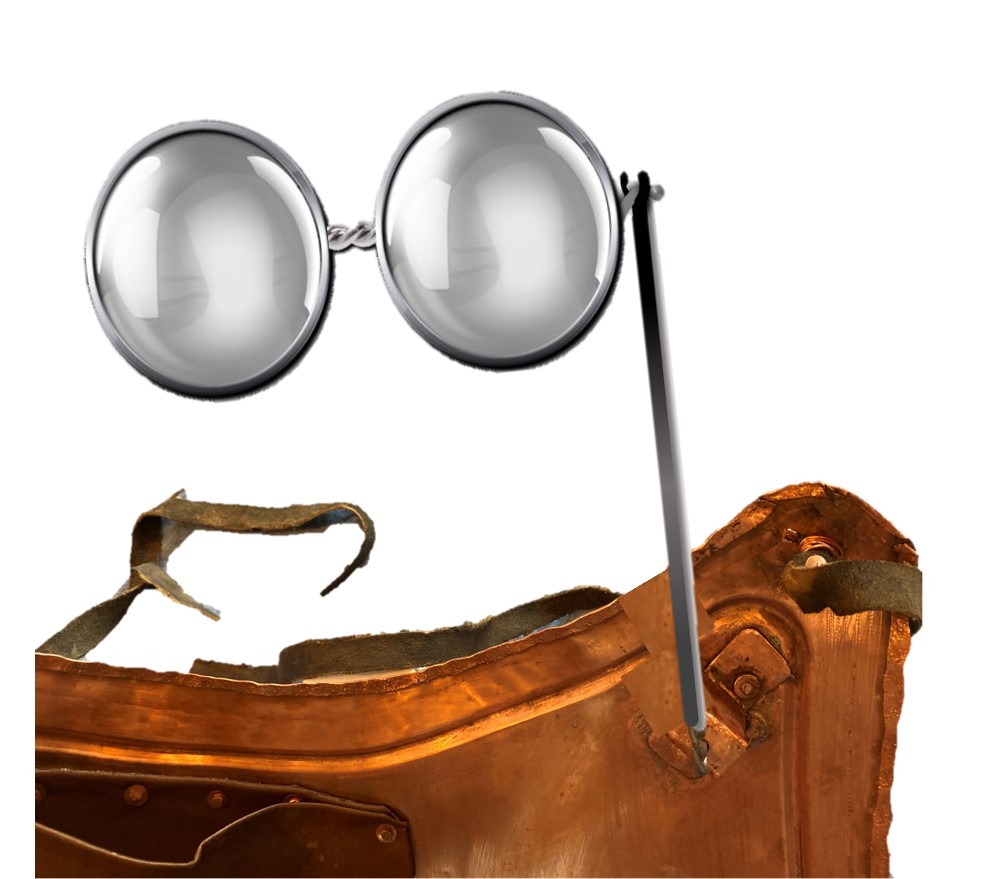
“Among other things we inquired minutely about the Urim and Thummim and the breastplate. We asked him what was meant by the expression “two rims of a bow,” which held the former. He said a double silver bow was twisted into the shape of the figure eight, and the two stones were placed literally between the two rims of a bow. At one end was attached a rod which was connected with the outer edge of the right shoulder of the breast-plate. By pressing the head a little forward, the rod held the Urim and Thummim before the eyes much like a pair of spectacles. A pocket was prepared in the breastplate on the left side, immediately over the heart. When not in use the Urim and Thummim was placed in this pocket, the rod being of just the right length to allow it to be so deposited.
This instrument could, however, be detached from the breastplate and his brother said Joseph often wore it detached when away from home, but always used it in connection with the breastplate when receiving official communications, and usually so when translating as it permitted him to have both hands free to hold the plates.” (J. W. Peterson in The Rod of Iron I:3 (February 1924), 6—7.)
Imagine Seeing Joseph Eyes Through the Interpreters
But think of what you would see if you were standing in front of someone holding the urim and thummim described up to their eye; you would have an eye within a triangle! So what we have with this information from church history is a link between the “All-Seeing-Eye” symbol and to the instrument known as a urim and thummim.
Another thing a triangle can symbolize is past, present and future, the knowledge and comprehension of which constitutes ‘omniscience’ one of God’s primary attributes. Take a look at Doctrine and Covenants 130:6-9:
“The angels do not reside on a planet like this earth; But they reside in the presence of God, on a globe like a sea of glass and fire, where all things for their glory are manifest, past, present, and future, and are continually before the Lord. The place where God resides is a great Urim and Thummim. This earth, in its sanctified and immortal state, will be made like unto crystal and will be a Urim and Thummim to the inhabitants who dwell thereon, whereby all things pertaining to an inferior kingdom, or all kingdoms of a lower order, will be manifest to those who dwell on it; and this earth will be Christ’s.”
The All-Seeing-Eye symbol seems clearly indicative of the active use of the instrument known as a urim and thummim whether that instrument be diamond or glass-like stones or of the place that God resides and the future glorified state of our own world.
The gift of omniscience seems to be something that God has shared with man in certain capacities here on the earth and something that will be an attribute to all those of a Celestial inheritance.
It should be no surprise to anyone that this marvelous symbol (and many others like the pentagram and the number 13) would be co-opted by Satan and others who wish to apply God’s divine attributes to their own selfish purposes. Everything originates from God. He is the great creator and Satan can create nothing in and of himself; “he is impotent” as Boyd K. Packer so succinctly put it. So any symbol he or others attribute to themselves is simply something that is being borrowed from a higher, purer source.
Our friend, Ensign article here circa 1981 that states:
“Symbols can, of course, be misleading. Interpretations can be wrong, or the symbol itself misunderstood. However, in dealing with scriptural symbols, we have been given a guide. The Savior proclaimed that “all things bear record of me” (Moses 6:63). That is, all symbols teach of Christ, of his mission and relationship to us.” (Lenet Hadley Read, “All Things Testify of Him: Understanding Symbolism in the Scriptures”, Ensign, Jan. 1981, 5)
 I have learned over the years the truthfulness of the doctrine that there is opposition in all things; so if you can find a symbol being used for evil purposes, you can be pretty confident that there is a righteous use for that particular symbol somehow. I am personally grateful for the context that the restoration brings to the study of symbolism.
I have learned over the years the truthfulness of the doctrine that there is opposition in all things; so if you can find a symbol being used for evil purposes, you can be pretty confident that there is a righteous use for that particular symbol somehow. I am personally grateful for the context that the restoration brings to the study of symbolism.
Symbols are nothing more than an alphabet; letters that can be rearranged to convey different ideas. They are neither good nor evil in and of themselves. Just as I can take a few letters and spell the word D-O-G which would make you think of a furry four-legged beast, or I can arrange them to spell G-O-D and the meaning could not be more different.
Satan spoke to Eve in the form of the serpent and Moses was commanded by God to build a brass serpent to heal all Israelites who looked upon it. This same serpent-on-a-staff motif as a method of healing is also utilized in the medical industry in the form of the intertwining snakes of the Caduceus.

So the meaning of the symbol is defined by the intent of whomever is using it.
The search for the true meaning of symbols will be something that will always fascinate me and I look forward to a future day when all symbols can be understood in their proper order and place in truth.”
http://emp.byui.edu/SATTERFIELDB/PDF/DavidOMcKay%27sTempleSermon.pdf
Temple by David O Mckay
Complete article here: The “All-Seeing-Eye” Symbol and the Urim and Thummim Connection Steve Reed
Symbols
“Part of our problem is that we are not particularly a symbol-oriented people.
We like prose; well-written sentences laid out so carefully that you can’t misunderstand them. We are not big on poetry; we don’t read very much of it, particularly any serious kinds of poetry.
We like the Doctrine and Covenants. It lays out ideas line upon line, precept upon precept, building upon each previous idea. We’re not big on the Old Testament. It is so large, and it is full of strange things that are going on there that we’re not always familiar with.
We like Nephi. He says, ‘My soul delights in plainness.’ We’re not wild about Isaiah. Isaiah uses all kinds of word-pictures. And he loves pronouns and doesn’t particularly feel it necessary to give you an antecedent to the pronoun.
Now the temple is more poetry than prose. It is more Old Testament than Doctrine and Covenants. It is more Isaiah than Nephi. So our challenge as members of the Church is to learn how to learn through the use of symbols.” (S. Michael Wilcox – House of Glory)
Hebrew Letter Shin
“It is speculated that Jews were among the first to use this amulet due to their beliefs about the evil eye. The symbol of the hand appears in Kabbalistic manuscripts and amulets, doubling as the Hebrew letter “Shin”, the first letter of “Shaddai”, one of the names referring to God. The use of the hamsa in Jewish culture has been intermittent, utilized often by Sephardic Jews during the late nineteenth and early twentieth centuries, then less and less over time into the mid-twentieth century. However, the hamsa has been present in Judaism dating all the way back to Biblical times, where it is referenced in Deuteronomy 5:15, stated in the Ten Commandments as the “strong hand” of God who led the Jews out of Egypt. The hamsa is later seen in Jewish art as God’s hand reaching down from heaven during the times of late antiquity, the Byzantine period, and even medieval Europe. Evidence has also emerged of the hamsa being used by Jews from medieval Spain, often associated with “sympathetic magic”. Historians such as Shalom Sabar believe that after the Jewish expulsion from Spain in 1492, exiled Jews likely used the hamsa as protection in the foreign lands they were forced to relocate to, however this assumption has been difficult to prove. According to Sabar, the hamsa has also been used later in Europe “as a distinctive sign of the priesthood, especially when they wished to show that a person was of priestly descent…”. https://en.wikipedia.org/wiki/Hamsa
THE CITY OF LEHI BUILT- Annotated Book of Mormon page 558 “…in a particular manner.” (Alma 50:15; Insight p. 312)
 The Hebrew Shin, the 21st letter of the Hebrew alphabet, is the first letter of two of the names of God. Shin also stands for the word Shaddai, a name for God Almighty. It is formed roughly in the shape of the English letter ‘W’ with the left and middle legs connecting before jointly connecting to the right leg as shown on the left.
The Hebrew Shin, the 21st letter of the Hebrew alphabet, is the first letter of two of the names of God. Shin also stands for the word Shaddai, a name for God Almighty. It is formed roughly in the shape of the English letter ‘W’ with the left and middle legs connecting before jointly connecting to the right leg as shown on the left.  One religious significance of the letter Shin in that there are three valleys that encompass the holy city of Jerusalem in the sacred name of God: the Ben Hinnom Valley, the Tyropoeon Valley and the Kidron Valley, and that these valleys converge to form the shape of the letter Shin (shown on the right; insert is an aerial view). The Temple in Jerusalem is located where the dagesh (horizontal line) ends. This is seen as a fulfillment of scripture (Deuteronomy 16:2) that instructs Jews to celebrate the Passover at “the place which the LORD shall choose to place His name there.” (https://en.wikipedia.org/wiki/Shin_(letter))
One religious significance of the letter Shin in that there are three valleys that encompass the holy city of Jerusalem in the sacred name of God: the Ben Hinnom Valley, the Tyropoeon Valley and the Kidron Valley, and that these valleys converge to form the shape of the letter Shin (shown on the right; insert is an aerial view). The Temple in Jerusalem is located where the dagesh (horizontal line) ends. This is seen as a fulfillment of scripture (Deuteronomy 16:2) that instructs Jews to celebrate the Passover at “the place which the LORD shall choose to place His name there.” (https://en.wikipedia.org/wiki/Shin_(letter))

The city of Lehi began to be built “in a particular manner” (Alma 50:15) 71 years before Christ was born and may have been located at the East Forks Works in Clermont County, Ohio. The earthworks included sacred Jewish symbols of the oil lamp, the Menorah, a compass and square. Next to these symbolic earthworks is dirt dug out forming the sacred letter Shin as shown on the left aerial photo.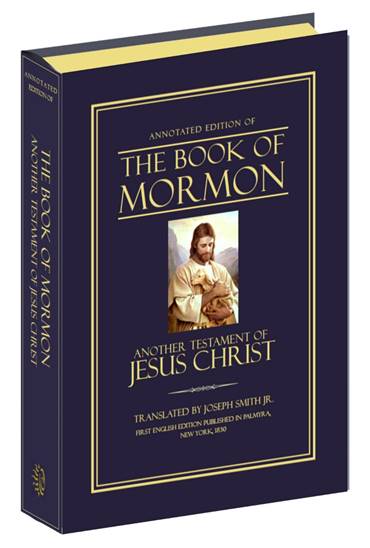
The East Fork Works survey plate XXXIV, No. 2, from Ancient Monuments by Squier and Davis, superimposed on a Google Earth map where it was surveyed in 1847. The letter Shin is shown within the yellow circle above left.
Purchase Annotated Book of Mormon Here



